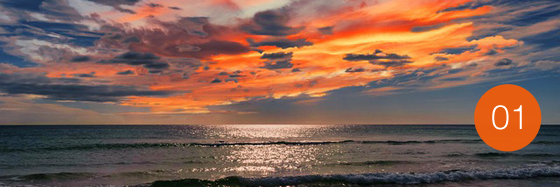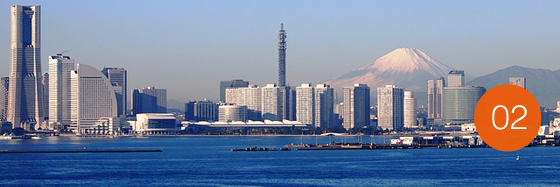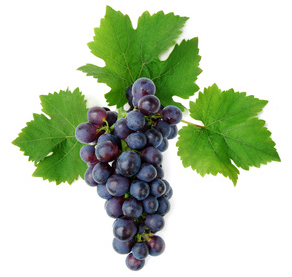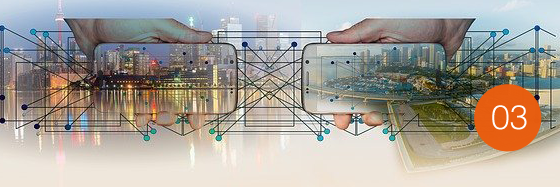 |
| Solutions from GDV - more than just software |
|
GDV-Newsletter
|
|
 "As for the future, the task is not to foresee it, but to enable it." "As for the future, the task is not to foresee it, but to enable it."
antoine de saint-exupery
|
|
|
Dear Reader,
a
turbulent year with many events and developments, that were previously
not thought possible, lies behind us all. No, -no need to worry-, you
won't find the C-word in this newsletter (at least in the text part).
In my opinion, the essential topics, aspects and, above all, facts in
this context have been presented and discussed in sufficient detail, at
least for 2020.
As an innovative software house, we are naturally more focused on the
future and want to do our part to make it possible, in the spirit of
Antoine de Saint-Exupery, in a further form for the community. And we
had plenty of opportunity to do so again in 2020. In addition to the
project-driven further development of our specialist applications, we
were able to start researching and developing in really very
interesting and future-oriented areas as part of an EU R&D funding
project. We were able to win another R&D project as a lead partner
in a competition organized by the Rhineland-Palatinate Ministry of
Economic Affairs; the final approval is imminent. But just read for
yourself in our short articles what happened to us in this context in
2020
I wish you a happy and successful but above all healthy 2021!
With best New Year's greetings from Ingelheim,

(Thomas Riehl)
|
|
|
|
|
 |
|
R&D at GDV I
A trip to Fuerteventura? * |
|
No,
more like a trip into the future. And this time it all started with an
application for funding from the Investment and Structural Bank
Rhineland-Palatinate (ISB) for an R&D project in early 2019. The
basis for this was the
expansion of the state's innovation and technology funding program to
include software development by Volker Wissing on February 7th, 2019.
The core of our application was the definition of various work
packages, all of which revolved around extensions of a modern framework
for the IACS application process. The application was successful and
the final approval for the “development of a core system for IACS
applications with special consideration of the requirements for
digitization in agriculture” came at the beginning of 2020. The
work could begin and the first results are already available.
The subject of "geometry processing on small, mobile devices" does not
sound particularly exciting at first. However, if you take a closer
look at existing solutions, you will find that they usually did not
focus on the implementation for small devices with all their
peculiarities and pitfalls. With the development of a prototype as a
mobile app for geometry processing especially for smart devices, we
have made good progress in closing this gap. The tests so far have
given users the impression that fingers can suddenly and magically seem
slimmer and that editing and digitizing on small screens can also be
quite fun. Since a nationwide internet supply is unfortunately not yet
guaranteed in this country, the question of the interaction of online
and offline processing and the associated storage and intermediate
storage problems always arises when developing such mobile
applications. Here, too, one could think that the solutions available
on the market cover all conceivable wishes and requirements. You
already guessed it; in this case too there is "room for improvement".
Especially when it comes to mass data and efficient synchronization
methods and caching algorithms in the change from online and offline
mode, there is still a lot to research and improve. We are sure that we
are on the right track with our newly developed prototype in the form
of a progressive WebApp. Two further work packages of the R&D
project deal with the possibilities of blockchain technology in the
implementation of IACS specialist procedures. We were also able to
tackle one of them in 2020. The question was to what extent geometry
data can also be meaningfully mapped on a blockchain and, if necessary,
also processed. In cooperation with the Mainz University of Applied
Sciences under the supervision of Prof. Dr. Pascal Neis, a master's
thesis entitled “Blockchain and Geodata” was written. You
can find an article by Business Geomatic on this under the link at the
end of this article. Some interesting work packages from this R&D
project are still open for the new year and the time after. We are
confident that some of the emerging results will be found in our
steadily growing GDV software development kit (GSDK) in the future and
will therefore also be available to our customers in the form of
innovative specialist applications.
|
|
 |
| * Trip to Fuerteventura? FUE is the international abbreviation (IATA code) for Fuerteventura Airport in Spain ;-) |
|
|
|
 |
|
R&D at GDV II
A trip to Japan |
|
|
 It
actually started on a business trip to Japan in February 2020. On the
fringes of B2B discussions, in a relaxed exchange between a small group
of participants from the Rhineland-Palatinate business delegation, the
idea for an innovation project in the interplay of sustainable
viticulture and artificial intelligence was born. The basic idea: with
the help of AI and VR glasses, also to enable non-experts to prune
vines using the "gentle pruning" method.
This not only enables the vines to have a much longer harvest time, but
also leads to increased deep growth of the root stock over the longer
period of use. This in turn leads to better water availability for the
plants and increases the drought resistance when temperatures rise with
lower rainfall. So far, the widespread dissemination of the relatively
new pruning method has stood in the way that only very well-trained
people with experience in viticulture are considered for the correct
implementation. The need for personnel is huge. By using VR glasses,
which seem to project the cutting marks calculated by AI algorithms
almost in real time directly onto the vine, even non-experts in the
field of pruning would be able to carry out the work. The process of
"gentle pruning" could thus achieve a major breakthrough in the area
and make viticulture even more sustainable overall. It
actually started on a business trip to Japan in February 2020. On the
fringes of B2B discussions, in a relaxed exchange between a small group
of participants from the Rhineland-Palatinate business delegation, the
idea for an innovation project in the interplay of sustainable
viticulture and artificial intelligence was born. The basic idea: with
the help of AI and VR glasses, also to enable non-experts to prune
vines using the "gentle pruning" method.
This not only enables the vines to have a much longer harvest time, but
also leads to increased deep growth of the root stock over the longer
period of use. This in turn leads to better water availability for the
plants and increases the drought resistance when temperatures rise with
lower rainfall. So far, the widespread dissemination of the relatively
new pruning method has stood in the way that only very well-trained
people with experience in viticulture are considered for the correct
implementation. The need for personnel is huge. By using VR glasses,
which seem to project the cutting marks calculated by AI algorithms
almost in real time directly onto the vine, even non-experts in the
field of pruning would be able to carry out the work. The process of
"gentle pruning" could thus achieve a major breakthrough in the area
and make viticulture even more sustainable overall.
After the trip to Japan, a cooperation in the form of an operational
group was established for the necessary research and development. In
addition to the GDV, members are: The Technical University of
Kaiserslautern, the Moselle Rural Service Center, the Mosel State
Winery and a number of Rhineland-Palatinate wineries. With a
subsequently developed action plan for digitization in viticulture, the
application was made in accordance with a call for funding from the
Ministry of Economics, Transport, Agriculture and Viticulture as part
of the development program "Environmental Measures, Rural Development,
Agriculture, Food" (EULLE). The call for funding was made for the
“European Innovation Partnership for Agricultural Productivity
and Sustainability” (EIP-Agri for short). 8 projects were
selected for funding and the EIP-Agri joint project "AI supported
pruning using the example of sore pruning in steep vineyards on the
Moselle" took first place (see link at the end). The official approval
is usually only a purely formal matter and is expected to take place at
the beginning of the year. If the project delivers useful results, the
next and logical step would be the development of autonomous pruning
machines.
|
|
 |
|
|
|
|
 |
|
Infrastructure atlas
The expansion continous |
|
The
expansion of internet-enabled infrastructures towards a real broadband
supply for the population is essential on the way to a knowledge and
information society (you may still remember “Information at your
fingertips”, see info link at the end). He has to go ahead and
goes ahead. However, this also means that the infrastructure atlas
(ISA) as the central documentation and information instrument of the
federal government for Internet-compatible infrastructures must also be
consistently and continuously expanded and optimized, if only because
of the ever-increasing demands and data volumes. And that happened
again to a notable extent in 2020, which was really necessary given an
increase in data providers of more than 230% percent. Over 2000 new
data suppliers, many of them regional authorities from the local
community, were won over. The number of registered users has tripled
compared to the previous year. In order to cope with this very likely
steep increase in the volume of data and inquiries in the future,
various tuning measures were carried out on the internal database
system and during synchronization with the database in the DMZ.
The previously time-consuming user data synchronization from the
internal system to the DMZ now only takes a few seconds, for example.
The data import functions have been significantly expanded and the
Oracle APEX WebGIS client has been completely replaced by a solution
based on Angular, OpenLayers and REST services and a configurable print
edition (based on GDV-MapBuilder) has been added. As a result, the
planning and shared use components in the infrastructure atlas could
now be combined in one application. This modern and uniform user
interface exploits the improved possibilities and speed advantages of
modern web browsers and, together with the revised and expanded map
tools, leads to a significantly improved user experience.
In addition, there is a significant improvement in system performance
in the part of the ISA that is accessible to external users, which was
accompanied by the substitution of almost all components with
open-source products. Central to this are PostgreSQL and Geoserver, for
which we have also implemented an extension for lightning-fast
grid-based intersection queries. With the changeover of the DMZ to
open-source software, more than two birds could be killed with one
stone. On the one hand, this already complies with the strategy of the
EU and the federal government for the use of open-source software in
administration. On the other hand, in addition to the better
performance, there are significantly better options for the scalability
of the overall system and, especially for the database system, there is
enormous potential for savings in license and maintenance costs. These
saved costs can then be meaningfully invested in the further
development of the overall system that will also be necessary in the
future with increasing users and data volumes. So far, the conversion
of the DMZ part of the ISA in this direction has been absolutely
convincing and can rightly serve as a blueprint for the overall system.
At the same time, the underlying operating systems could also be
included in the considerations. Nevertheless, there is still enough
potential in the future for the further expansion of an IT system that
is already an important instrument for Germany's digital future.
|
|
 |
|
|
|
|
and otherwise?
|
|
Hooray I
We welcome
|
Svenja
Ruthmann, Carolin Horst ,Gregor Hubrich and finally Joachim Müller
again in our team. May the IT god always favor you.
|
|
|
|
Hooray II
spatial commander |
| Release 2.4.5 is here! It primarily contains bug fixes, but also some new features. More.. |
|
|
the year 2020
Better forget? |
No way - this Review relentlessly shows the whole truth (sorry folks, german lyrics but funny anyway)!
.
|
|
|
|
|
|
|
| If you no longer wish to receive this email (an: riehl@gdv.com), you can unsubscribe here . If this message is not displayed correctly, please click here. |
|
GDV Gesellschaft für geografische Datenverarbeitung mbH
Thomas Riehl Neisser Straße 4
55218 Ingelheim Deutschland
+496163271480 riehl@gdv.com
|
|
|
|